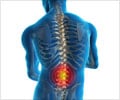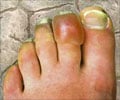The American Association of Neurological Surgeons (AANS) offers advices on safety measures that would help to put a freeze on on winter sports injuries.
Onset of winter reminds about the life-altering and even fatal injuries posed majorly by winter sports, which can be very well prevented by following simple safety measures.
The American Association of Neurological Surgeons (AANS) offers this advice: Don’t risk your neck for that fleeting moment of fun, because it takes only one moment for a life to change forever. Wear a helmet and follow other safety precautions to help put a freeze on winter sports injuries.Every year, thousands of adults and children are treated at U.S. hospital emergency rooms for head and neck injuries related to winter sports. As a result, many people are left with permanent health problems, are paralyzed, or lose their lives. The following are a few true-life accounts from the National Electronic Injury Surveillance System of the U.S. Consumer Product Safety Commission (CPSC):
• A 38-year-old male skied off the marked trail and was found at the bottom of an embankment. He was not wearing a helmet, suffered severe head, chest and abdomen trauma and died from his injuries.
• A 19-year-old female was sledding and hit playground equipment at the bottom of the hill. She suffered severe head and abdominal trauma and died from her injuries.
• A 19-year-old male was snowboarding, hit his head, and was found unconscious. He was not wearing a helmet and suffered a cranial hemorrhage and concussion.
• A 14-year-old male took a fall while snowboarding. He suffered a spinal cord injury at C6 and was left quadriplegic.
• A 48-year-old female passenger on a snowmobile traveling at 30 mph was thrown during a crash. She was not wearing a helmet and suffered a vertebral fracture at L3-L4.
• A 17-year-old male was playing ice hockey and slid backwards into a wall, sustaining an avulsion fracture at C-4.
Injuries severe enough to cause head injury or other trauma often also cause neck fracture or spinal cord injury. Winter sports contribute to a greater number of head injuries than neck injuries, but both head and neck injuries can be devastating. While severe head injuries can result in a host of disabling cognitive and physical health problems, severe neck injuries or spinal cord injuries can result in partial or complete paralysis. The most severe of these injuries can tragically end in death.
According to the AANS, many head and neck injuries can be avoided by following these simple safety precautions:
• Buy and use helmets or protective head gear approved by the ASTM for specific sports 100 percent of the time.
• Wear appropriate clothing for the sport.
• Do not participate in sports when you are ill, very tired, or have consumed alcohol.
• Do not participate in outdoor sports when weather conditions pose a serious hazard.
• Drive snowmobiles slowly and only on marked trails.
• Ice skate only in areas designated for skating, and be sure to check the ice for cracks and debris.
• Use only sleds that can be steered, and never go down a slope head first.
• Follow all posted signs and warnings on ski slopes, sledding hills and ice skating rinks.
Advertisement
PRI/L












